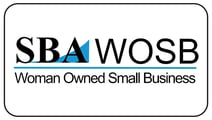The job market has never been better. Job openings continue to set records, and the number of people switching jobs has hit a seventeen-year high. After years of low demand, the talent-acquisition space is red-hot with recruiters hustling to attract and fill all of the open roles.
I read a lot of blogs and listen to a lot of podcasts that talk about the latest HR tech tool to help make the recruiting function more productive. There is a lot of money being thrown at tech solutions to help organizations recruit a candidate. For example, there will be the equivalent of seven football fields of exhibitors at this year’s HR Tech Conference in Las Vegas.
It is interesting to see how much more money is spent on talent acquisition versus talent development. What would be the results if we began to invest more in talent development rather than continuing to spend it trying to attract new candidates?
Talent attraction uses up a tremendous amount of resources – in-house recruiters, job boards, tech tools, and external recruiter fees. The resource drain is even more significant when you factor in the productivity loss due to the time to fill open roles due to turnover.
To cut costs, organizations commonly move external recruiting in-house (or sometimes do the reverse and move recruiting externally via RPO).
The result is that a tremendous amount of resources are still required to replace all of the employees who have left.
I theorize that moving more funds to talent development will lower the overall HR spend and will improve organizational productivity due to brain-drain avoidance.
Here is an example: SHRM estimates that the average cost to hire an employee is $4,129. SHRM also calculates that it takes 42 days to fill an average position.
Let’s do some quick math:
Company Employees 5,000
% Turnover 5% (the more common average is actually 15%)
# of Employees Leaving 250
Cost to Hire/Employee $4,129
Total Cost to Hire $1,032,250
It is hard to say what this hypothetical company spends in talent development. I guess that it may spend some money on executive coaching its senior leaders and high-potentials. My conservative estimate is that the total spend would be $200,000.
Hang in there with me. What if this hypothetical company moved an additional $200,000 into talent development for a one-year test period to determine if the talent-development investment would reduce turnover?
This investment in additional talent development would pay off if it reduced employee turnover by 19.2%.
Here is the math:
Talent-Development Investment: $200,000
Cost to Hire/Employee $4,129
Total # of Employees 48
% Total Employee Turnover 19.2%
The big question is: Can $200,000 invested in career-development tools lower turnover by 19.2% or more? I believe that a strong case can be made for this.
Here is why:
- Some of the top reasons why people leave are because their job wasn’t enjoyable, their strengths weren’t being used, and they weren’t growing in their careers.
- Investments in coaching or talent-management software have both proven to create higher employee engagement because employees recognize and appreciate the attention and opportunity to grow.
The $200,000 in this example can go a long way if invested strategically.
- Several affordable coaching programs can provide broad coverage. At CMP (shameless plug coming next), we work with organizations of all sizes to provide accessible programs that can deliver the benefit of coaching to the highest number of employees.
- There are also excellent software firms like Fuel50 and Outmatch that provide online career-pathing programs to allow employees to begin to proactively self-manage their careers (full disclosure: CMP has business relationships with both firms).
I believe that smart organizations can gain a strategic advantage by redeploying funds away from talent acquisition to investments that will allow their employees to become more engaged.




